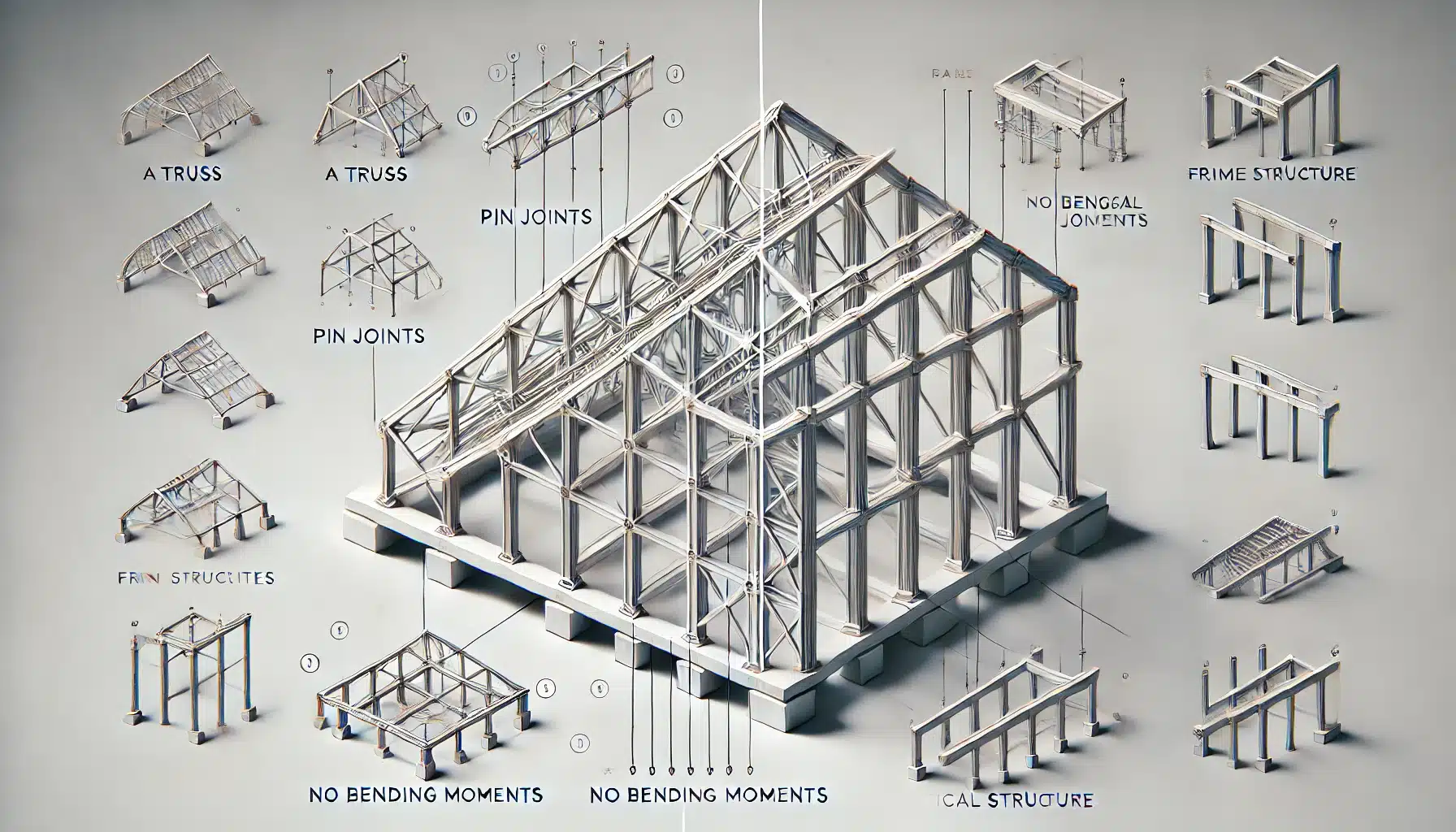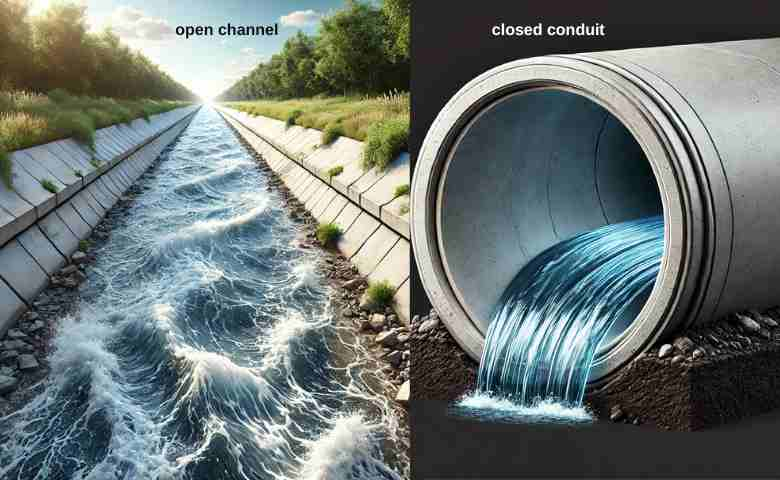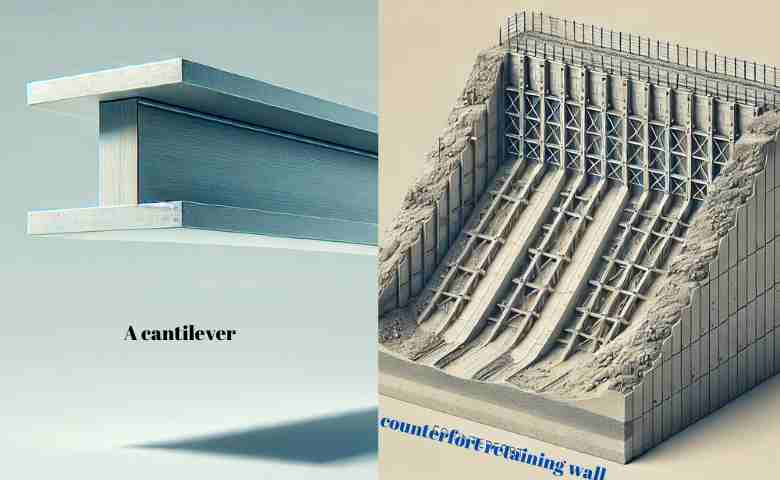Last Updated on July 4, 2025 by Admin
Are you ready to level up your civil engineering career in 2025? If you’re gearing up for a job interview, it’s important to be prepared with the right answers to impress your potential employer. To help you ace your next interview, we’ve compiled a list of the top 50 basic civil engineering interview questions and answers for 2025. From technical knowledge and problem-solving skills to teamwork and communication abilities, this comprehensive guide has got you covered. So let’s dive into these insightful Q&A’s and get ready to land that dream job!
ConstructionCareerHub App is LIVE — built ONLY for construction careers. Don’t apply with a weak resume.
Get ATS-ready Resume Lab + Interview Copilot + Campus Placement Prep (resume screening, skill gaps, interview readiness) — in minutes & Other advanced features.
Explore Smarter Construction Career Tools →Quick check. Big impact. Start now.
Basic Civil Engineering Interview Questions
Here are 50 basic questions that are likely to be asked, along with their answers:
- What is civil engineering?
Civil engineering is a professional discipline that deals with designing, constructing, and maintaining the built environment, including infrastructure systems such as roads, bridges, buildings, dams, and water supply networks. If you are preparing for your civil engineering job interview, you must check this eBook to land your dream construction job.

- Name the main areas of civil engineering.
The main areas of civil engineering include structural engineering, geotechnical engineering, transportation engineering, water resources engineering, environmental engineering, and construction management.
Most Essential eBooks:
- Construction Jobs Interview: An Ultimate Interview Preparation Guide Ebook
- Construction Management Job Interview Guide + 200 Interview Q&A PDF eBook
- An Ultimate Guide to Launch Your Career in Digital Construction: Ebook
- BIM Job Interview Preparation Guide + 210 Interview Questions and Answers PDF eBook
- What are the roles and responsibilities of a civil engineer?
A civil engineer is responsible for planning, designing, constructing, maintaining, and managing infrastructure projects, ensuring public safety, and collaborating with other professionals, such as architects, geologists, and environmental scientists.
- What is the purpose of a site plan?
A site plan is a scaled drawing that shows the existing conditions and proposed improvements of a site, including buildings, landscaping, parking, utility connections, and drainage facilities. It is used for design, permitting, and construction purposes.
- What is the difference between concrete and cement?
Cement is a fine powder made of limestone, clay, and other minerals, which acts as a binding agent when mixed with water. Concrete is a composite material composed of cement, aggregates (such as sand and gravel), and water. When the cement hydrates, it hardens and binds the aggregates together, forming a strong and durable material. Please check this list of the top cement manufacturing companies in India.
- What is the purpose of reinforcement in concrete?
Concrete reinforcement provides strength and ductility, allowing it to effectively carry tensile and shear stresses. Please check these top 100 Must-Know Interview Questions and Answers on Concrete Technology.
- What are the primary types of foundations?
The primary types of foundations are shallow foundations (such as spread footings, strip footings, and mat foundations) and deep foundations (such as piles, drilled shafts, and caissons).

- What is the difference between a load-bearing wall and a partition wall?
A load-bearing wall supports the structure’s weight above it, while a partition wall serves only as a divider between spaces and does not carry any structural loads.
Related Posts:
- Text Books & Reference Books on Structural Design of Bridges
- Structural Engineering: An Extensive Field of Innovation and Ingenuity
- 55 Mostly Asked Structural Engineer Interview Questions and Answers
- Meet The Growing Trend Of Plastic Roads
- Finding Purpose and Meaning In Life: Living for What Matters Most
- What are the main types of steel reinforcement?
The main types of steel reinforcement are deformed bars, plain bars, and wire mesh or welded wire fabric.
- What are the different types of beams?
Common types of beams include simply supported, cantilever, overhanging, fixed, and continuous beams.
- What are the primary types of loads on a structure?
The primary types of loads on a structure are dead, live, wind, seismic, and impact loads.
- What is a moment?
A moment is a force that causes rotation or bending in a structural member. It is typically measured in units of force multiplied by distance (e.g., pound-feet or Newton meters).
- What is the difference between stress and strain?
Stress is the internal force per unit area within a material, while strain is the deformation or change in dimension per unit length caused by stress.
- What is the modulus of elasticity?
The modulus of elasticity (also known as the elastic modulus or Young’s modulus) is a material property that measures the stiffness of a material, defined as the ratio of stress to strain.
- What is the difference between a truss and a frame?
A truss is a rigid structure composed of straight members connected at their ends, while a frame is a structure composed of beams, columns, and other members that can support bending and axial loads.

- What are the different types of soil?
The primary types of soil are clay, silt, sand, gravel, and organic soils. Each type has different properties, such as particle size, permeability, and compressibility, which affect their suitability for construction purposes.
Related Practice Tests:
- What is soil compaction?
Soil compaction is the process of increasing soil density by removing air and reducing the void spaces between soil particles, typically using mechanical methods such as rollers, compactors, or tamping. Compaction improves soil strength, stability, and bearing capacity.
- What is the purpose of a retaining wall?
A retaining wall is a structure designed to hold back soil or other materials, preventing slope failures and erosion and providing support for vertical or near-vertical grade changes.
- What is a geotechnical investigation?
A geotechnical investigation is collecting and analyzing subsurface information, such as soil and rock properties, groundwater conditions, and potential hazards, to provide recommendations for design and construction of foundations, retaining walls, and other civil engineering projects.
- What is the purpose of a soil test?
A soil test is performed to determine the physical and engineering properties of the soil, such as bearing capacity, compaction characteristics, permeability, and compressibility. These properties are essential for designing foundations and other soil-structure interactions.
Related Posts:
- How to prepare for a job interview: A Complete Guide for 2025
- 31 Essential Civil Engineering Basic Questions you need to know about
- 50 Most Essential Entry-Level Civil Engineering Interview Questions with Answers
- Top 50 Construction Job Interview Questions and Answers
- 25 Crucial Questions and Answers: Decoding Civil Engineering Careers in India
- What are the different types of bridges?
The main types of bridges are beam bridges, arch bridges, cable-stayed bridges, and suspension bridges.
- What is a culvert?
A culvert is a structure that allows water to flow under a road, railway, or dam, typically in the form of a pipe, box, or arch.
- What is a catch basin?
A catch basin is designed to collect stormwater runoff from paved surfaces and direct it to a storm sewer or other drainage system while trapping sediment, debris, and other pollutants.
- What is the difference between an open channel and a closed conduit?
An open channel is a watercourse with a free surface exposed to the atmosphere, such as a river or canal, while a closed conduit is a fully enclosed pipe or tunnel that conveys water under pressure.

- What is the purpose of a sedimentation basin in water treatment?
A sedimentation basin removes suspended solids from water through gravity settling, allowing cleaner water to be drawn off for further treatment or discharge.
- What is the difference between a sanitary sewer and a storm sewer?
A sanitary sewer collects wastewater from homes, businesses, and industrial facilities for treatment at a wastewater treatment plant, while a storm sewer collects and conveys stormwater runoff from paved surfaces, roofs, and other impervious areas to prevent flooding and reduce water pollution.
- What is the purpose of aeration in wastewater treatment?
Aeration is used in wastewater treatment to promote the growth of aerobic microorganisms, which break down organic matter and convert it into carbon dioxide, water, and other harmless byproducts.
- What is the difference between an active and passive solar heating system?
An active solar heating system uses mechanical equipment, such as pumps or fans, to collect, store, and distribute solar energy. In contrast, a passive solar heating system relies on natural processes, such as convection and radiation, without mechanical equipment.
- What is an environmental impact assessment (EIA)?
An EIA is a systematic process used to identify, predict, evaluate, and mitigate the potential environmental impacts of a proposed development or project. The goal is to promote sustainable development and minimize harm to the environment.
- What are green building materials?
Green building materials are environmentally friendly, energy-efficient, and sustainable. They are often made from renewable resources, have recycled content, or have low environmental impacts during their life cycle.
- What is a traffic impact study?
A traffic impact study is an analysis of the effects that a proposed development or project will have on the surrounding transportation system, including changes in traffic volumes, patterns, and safety. The study provides recommendations for mitigating adverse impacts and ensuring adequate transportation infrastructure.
- What is the purpose of a pavement management system?
A pavement management system is a systematic approach to evaluating, maintaining, and rehabilitating pavements, using data-driven techniques to optimize the allocation of resources, extend pavement life, and minimize life-cycle costs.
- What are the different types of pavement materials?
The main types of pavement materials are asphalt (also known as bituminous or flexible pavement), concrete (also known as rigid pavement), and unbound granular materials (such as gravel or crushed stone).
- What is the purpose of a subbase and base course in pavement construction?
A subbase provides a stable and uniform support for the pavement layers, while a base course distributes the traffic loads to the subgrade and provides additional strength and stiffness to the pavement structure.
- What is the difference between a traffic circle and a roundabout?
A traffic circle is a large circular intersection where vehicles circulate around a central island, while a roundabout is a smaller circular intersection with specific design features, such as yield control at entry points and counterclockwise circulation, that promote safety and efficiency.
- What is a super-elevation?
Super-elevation is the banking of a roadway surface along a horizontal curve to counteract the centrifugal force acting on vehicles and improve safety and comfort.
- What is the purpose of a drainage system in a roadway?
A roadway drainage system is designed to remove surface water and groundwater from the pavement structure, preventing water-related damage, such as erosion, frost heave, and weakening of the subgrade.
- What is the difference between a cantilever and a counterfort retaining wall?
A cantilever retaining wall is a reinforced concrete wall with a large base slab and a thin stem that resists lateral earth pressure by bending, while a counterfort retaining wall has vertical concrete webs or counterforts that act as tension ties and provide additional support.

- What is a cofferdam?
A cofferdam is a temporary structure built around a construction site, typically in a water environment, to create a dry and stable work area by excluding water and soil.
Related Posts:
- Top 50 Revit Interview Questions & Answers
- 51 top AutoCAD Interview Questions and Answers [2025 Updated]
- 50 Top Design Engineer Interview Questions and Answers [2025 Updated]
- Top 50 BIM Interview Questions and Answers
- What is the purpose of a construction schedule?
A construction schedule is a timeline that outlines the sequence of activities, milestones, and deadlines for a construction project, helping to coordinate resources, manage risks, and track progress.
- What are the main types of construction contracts?
The main types of construction contracts are lump sum or fixed price, cost-plus, unit price, and design-build.
- What is a change order?
A change order is a formal document that modifies the original construction contract, typically to accommodate changes in scope, schedule, or budget.
- What is the role of a project manager in a construction project?
A project manager is responsible for planning, coordinating, and overseeing a construction project from inception to completion, ensuring it is completed on time, within budget, and according to specifications.
- What is the difference between quality control and quality assurance?
Quality control involves inspecting and testing construction materials and workmanship to ensure compliance with specifications, while quality assurance involves the proactive process of implementing and monitoring procedures, systems, and standards to prevent defects and ensure quality.
- What are the main components of a safety program in construction?
The main components of a safety program include hazard identification and assessment, safety training and education, personal protective equipment, safety inspections and audits, incident reporting and investigation, and emergency response planning.
- What is a critical path in project scheduling?
The critical path is the longest sequence of activities in a project schedule, which determines the shortest possible duration for completing the project. Any delay in the critical path activities directly impacts the project’s completion time.
- What is a work breakdown structure (WBS)?
A work breakdown structure (WBS) is a hierarchical decomposition of a project into manageable tasks or work packages, organized by phases or deliverables. It helps in project planning, resource allocation, and progress tracking.
- What is the difference between float and slack in project scheduling?
Float (or total float) is the amount of time an activity can be delayed without affecting the project’s completion date. Slack (or free slack) is the amount of time that an activity can be delayed without delaying the start of any immediately following activities.
- What is value engineering?
Value engineering is a systematic approach to improving a project’s value by optimizing its function, quality, and cost. It involves identifying and eliminating unnecessary costs without compromising the project’s performance, reliability, or maintainability.
- What is the role of a site engineer in a construction project?
A site engineer oversees day-to-day construction activities, ensures work is carried out according to plans and specifications, coordinates with subcontractors and suppliers, maintains quality control, and resolves technical issues that arise during construction. Download this ebook on Civil Site Engineer Interview Preparation Guide + 225 Interview Questions and Answers.
Why Prepare for these Interview questions and Answers?
For aspiring civil engineers gearing up for their interviews, a comprehensive “civil engineering interview questions and answers pdf” can be an invaluable resource. This document is designed to cover a wide array of topics and provide detailed answers to common queries. Similarly, “interview questions in civil engineering pdf” materials offer a structured insight into the variety of questions one might face, ranging from “basic interview questions civil engineering” to more advanced problems.
For those who are seeking to delve deeper into the specifics, technical interview questions civil engineering documents are tailored to challenge the applicant’s technical expertise.
Fresh graduates entering the job market can benefit from the above interview questions for civil engineering freshers, which focus on foundational knowledge and understanding of the field. These resources often include basic civil engineering interview questions that test the essential principles every civil engineer should know.
Moreover, common civil engineering interview questions are likely to highlight the most common questions asked in civil engineering interviews, ensuring that candidates are well-prepared for the typical interview scenarios.
Senior positions may require familiarity with technical interview questions for civil site engineer pdf, which deals with the practical aspects of civil engineering projects on-site. For a broader preparation, this interview guide which also includes top 100 civil engineering interview questions and answers can provide a more extensive set of queries and solutions.
For those interested in specific firms, resources like L&T civil engineering interview questions and answers pdf can be referred to this interview guide which offers a glimpse into the recruitment process of specific engineering companies. It’s also beneficial for students to review interview questions for civil engineering students, which may be more aligned with recent academic experiences and emerging industry trends.
Interview Questions for Fresher Civil Engineers (Top 20)
Landing your first role? The list below aggregates the interview questions for fresher civil engineer aspirants that recruiters ask most often. Think of it as a quick-fire boot camp covering fundamentals, software aptitude, and workplace mindset.
-
Explain the difference between working stress and limit-state design.
-
Which surveying instruments did you use during college projects, and why?
-
How would you select an appropriate foundation for low-rise housing on clay?
-
Describe a time you solved a site problem with limited data.
-
What safety checks precede concrete pouring?
-
Name three BIM tools a junior should master in 2025.
-
List steps to ensure bar-bending schedule accuracy.
-
Define compaction and its field control tests.
-
How do you prioritise tasks under a tight hand-over deadline?
-
Distinguish between OPC 43 and OPC 53 grades.
-
What is creep, and how does it affect long-term deflection?
-
State typical permissible settlement for shallow foundations.
-
Clarify the term “effective span” in slab design.
-
Give two methods to improve black-cotton soil-bearing capacity.
-
Draw a typical water-cement ratio vs. strength curve.
-
What is a sill level, and why is it important?
-
Describe slump-cone test limitations.
-
Suggest software that automates quantity take-offs.
-
Share one lesson from an academic mini-project you would apply on-site.
-
What attracts you to civil engineering as a career?
Unlock instant answers to the above civil engineering career questions with our powerful AI Construction Career Mentor. Whether you’re a fresher or an experienced professional, get tailored advice, interview prep, and job insights—24/7!
👉 Ask the AI Mentor Now and take the next smart step in your career!
Civil Site Engineer Interview Questions (Real-World Scenarios)
Moving from drawings to dirt? These civil site engineer interview questions (also searched as civil engineer interview questions site engineer) probe your ability to manage on-ground challenges:
| Scenario | What the interviewer wants to hear |
|---|---|
| Anchor-bolt misalignment discovered after column arrival | Root-cause analysis, tolerance check, remedial grouting plan, stakeholder communication |
| Unexpected groundwater inflow in excavation | Dewatering options, safety barricades, schedule impact mitigation |
| RFI backlog delaying concreting | Prioritization strategy, digital tracking, liaison with consultants |
| Concrete cube fails at 7 days | Investigation, core-cut testing, structural assessment, NCR closure |
| Supplier delivers steel without test certificates | QA/QC hold-point procedure, lab testing plan, contractual leverage |
Civil Engineering Questions and Answers for Interview – Quick Reference
Below is a rapid-revision table combining high-frequency civil engineering questions and answers for interview sessions plus concise model responses. Use it as a night-before cheatsheet for any civil engineer interview questions that pop up beyond the basics.
| Question | One-line answer |
|---|---|
| Define “zonation” in earthquake design. | Division of a region into seismic zones based on expected ground motion intensity. |
| Explain pozzolanic reaction. | Lime from cement reacts with silica/alumina in pozzolana, forming additional C-S-H for strength. |
| Why are expansion joints placed in bridges? | To accommodate temperature-induced expansion/contraction and prevent cracking. |
| State L/d ratio limits for simply supported beams (IS 456:2000). | 20 for tension reinforcement with Fe 415; can be modified by control factors. |
| What is the Froude number used for? | Classifying flow regimes (sub-critical, critical, super-critical) in open-channel hydraulics. |
Final Thoughts
Civil engineering is an ever-evolving field constantly being updated with the latest technologies. To stay up to date and be prepared for your next interview, it’s important to have a good understanding of the basics and any recent advancements in civil engineering. We hope our list of the top 50 basic civil engineering interview questions and answers has provided you with a comprehensive overview of what to expect from your upcoming interviews. Good luck!
FAQs
To prepare for a civil engineer interview, research the company, review the job description, refresh your technical knowledge, practice answering common interview questions, prepare for behavioral questions, compile a portfolio of your work, and dress professionally.
The basic skills of a civil engineer include technical knowledge, computer-aided design (CAD) proficiency, project management, problem-solving, effective communication, teamwork, and adaptability.
The five main types of civil engineering are structural, geotechnical, transportation, water resources, and environmental engineering.
Civil engineering basic refers to the fundamental concepts and principles that form the foundation of civil engineering, such as structural analysis, fluid mechanics, materials science, and geotechnical engineering. These principles are essential for designing, constructing, and maintaining infrastructure projects.
Foundational interview questions for civil engineers often revolve around core subjects such as structural analysis, materials science, fluid mechanics, and construction management. Candidates can expect to discuss their educational background, understanding of engineering principles, and any relevant project work or internships they have completed.
To prepare for a civil engineering interview, start by reviewing your core subject knowledge and any previous project experience. Understand the job description and the employer’s needs, and be ready to demonstrate how your skills and experiences align with them. Practice common interview questions, and prepare questions to ask the interviewer. Additionally, stay updated on the latest industry trends and advancements.
Seven typical interview questions might include: Can you explain a complex engineering concept in simple terms? Describe a challenging project you worked on and how you overcame difficulties. How do you ensure compliance with industry standards in your work? Give an example of how you’ve worked effectively under pressure. How do you prioritize tasks when managing multiple projects? Describe a time when you had to use innovative problem-solving skills. What software tools are you proficient in, and how have you applied them in your work?
John Smeaton, an English civil engineer responsible for the design of bridges, canals, harbors, and lighthouses, is often regarded as the “Father of Civil Engineering.” He is noted for his work in the 18th century, which laid the foundation for modern civil engineering practices.
‘Civil works’ encompasses the design, construction, and maintenance of the physical and naturally built environment. This includes public works such as roads, bridges, canals, dams, airports, sewerage systems, pipelines, structural components of buildings, and railways.
To pass a civil engineering interview, combine thorough preparation of your subject matter with practicing soft skills such as communication, teamwork, and problem-solving. Present your qualifications and experience clearly, show enthusiasm for the role, and exhibit a proactive and solution-oriented mindset. It’s also important to dress professionally, arrive on time, and follow up with a thank-you note after the interview.


